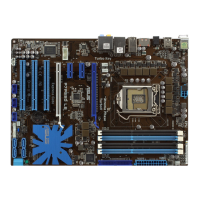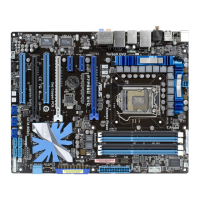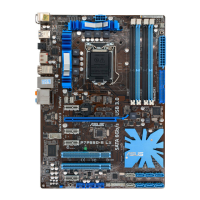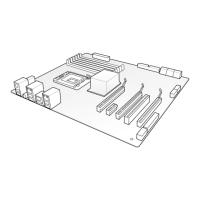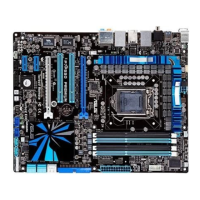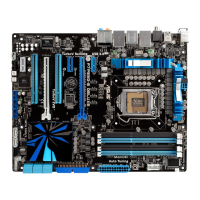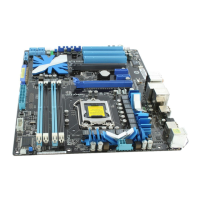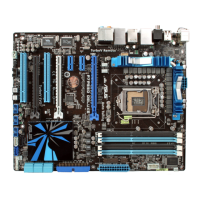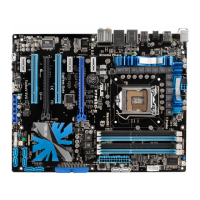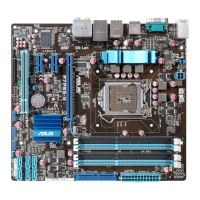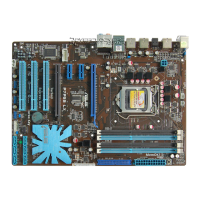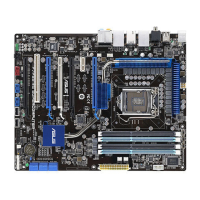Do you have a question about the Asus P7P55D PRO and is the answer not in the manual?
Details CPU socket type, supported processors, and the Intel P55 Express Chipset.
Lists memory type, speed, capacity, and expansion slot types.
Details advanced overclocking features and quiet thermal solutions.
Details major features like processor support, chipset, memory, and expansion slots.
Step-by-step instructions for installing the CPU, heatsink, and fan assembly.
Details DDR3 DIMM sockets, configurations, and installation procedures.
Describes PCI and PCI Express slots, their configurations, and interrupt assignments.
Details rear panel and internal connectors for peripherals, audio, and storage.
Explains ATX power connectors and system panel connectors for power and LEDs.
Provides warnings and instructions for updating the BIOS using ASUS utilities.
Explains the utility for updating BIOS using a USB flash drive without boot media.
Details ASUS CrashFree BIOS 3 for recovery and ASUS BIOS Updater for backup.
Provides an overview of basic system information like time, date, language, and SATA devices.
Menu for configuring overclocking settings, CPU ratios, and memory profiles.
Menu for changing Advanced Power Management (APM) settings like Suspend Mode and Power On options.
Configures boot device priority, boot settings, and security features.
Allows setting supervisor/user passwords and defining access restrictions to BIOS items.
Provides access to special functions like ASUS O.C. Profile, AI NET 2, and Express Gate.
Options for saving/discarding changes, loading default values, and exiting BIOS.
Introduces TurboV and Turbo Key for overclocking system performance.
Explains RAID 0, 1, 5, and 10 configurations and their benefits for data storage.
Steps to enable CrossFireX using the ATI Catalyst Control Center.
Steps to enable SLI using the NVIDIA Control Panel.
| Chipset | Intel P55 |
|---|---|
| CPU Socket | LGA 1156 |
| Memory Type | DDR3 |
| Maximum Memory | 16GB |
| Memory Standard | DDR3 2200(O.C.)/1600/1333/1066 |
| Expansion Slots | 2 x PCIe 2.0 x16, 1 x PCIe x4, 2 x PCIe x1, 2 x PCI |
| Storage Interface | 6 x SATA 3Gb/s |
| RAID Support | RAID 0, 1, 5, 10 |
| USB Ports | 12 x USB 2.0 |
| Form Factor | ATX |
| Audio Chipset | VIA VT2020 |
| Audio Channels | 8 Channels |
| LAN Chipset | Realtek 8112L |
| Max. LAN Speed | 10/100/1000Mbps |
| Memory Slots | 4 x DIMM |
| Dimensions | 12.0" x 9.6" (30.5cm x 24.4cm) |
| Power Connector | 24-pin ATX |
